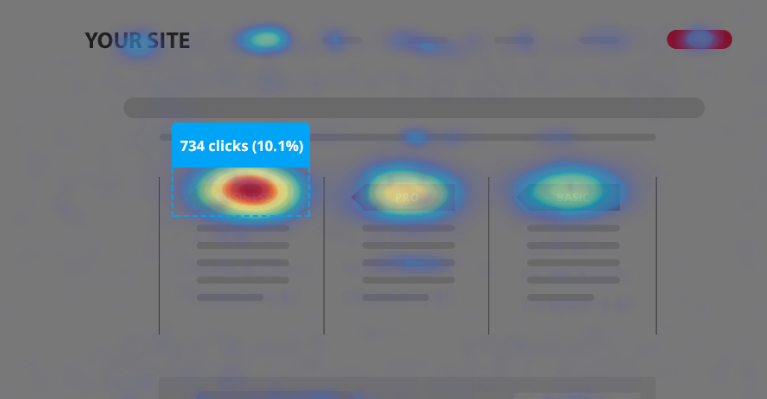
The Power of the A/B Test: Part 2

5 Factors to Effectively Transform Your PPC Performance
Long before the days of the Coronavirus, pay-per-click (PPC) advertising had become known for being a key component to modern day marketing. Now, with millions of people still obliged to self-isolate as much as possible, PPC has only become that much more essential to small business owners.
Even with many companies choosing to reopen all over Sacramento, online foot traffic is still the most popular way to attract new customers — which means you will need to optimize your brand representation and online marketing strategies as quickly and efficiently as possible.

The fact is, even before the days of necessary “social distancing,” there were dozens and dozens of factors that could help you benefit from regular A/B Testing. With so many opportunities to pause, reflect, and widen your audience, it would be foolish not to make efficient use of the downtime caused by the ongoing pandemic. You might be interested in optimizing conversions. You may be fully capable of this as well. But before we make any changes, we will need to factor in the most obvious of first steps.
1. Narrowing It Down
If you already read Part 1 of The Power of the A/B Test, you will already have an excellent idea of where to begin! Even with the 7 Crucial Elements in mind, it may still be helpful to identify the most sought after PPC areas on your landing pages. This is most effectively done by creating a Heat Map.

The purpose of a Heat Map is to create a succinct visualization for the hits your landing page typically garners with each visit, which will influence your tests for PPC. This is a perfect approach for those of you who identify as visual learners, as it will offer you a clear and colorful representation of what your current audience is attracted to. Once you have set up your first Heat Map, you will be able to visualize target areas clearly and quickly. This new data, in addition to everything you have learned thus far, will assist you in creating more accurate hypotheses when it comes to narrowing down which factors you want to test first.
2. Choose What You Want to Test
Now that you have a clearer picture of what your audience sees when they visit your landing pages, take a look at the data you have collected:
- Which areas receive the highest click count?
- Does your use of layout direct your attention to easy sales?
- What exactly would you like to see improved first?
You may be wondering… How exactly does A/B testing improve conversion rates? It starts with clear and succinct communication.
What services do you offer? Are your descriptions easy to find and understand? If you wish to generate more traffic, start by choosing an element that will impact SEO:
- Blog Headlines
- Length of Blog Posts
- Long-Tail Keywords
- Keywords and Ad Displays
The purpose of this is to optimize conversion rates. You need to break it down to a single element which you currently use to promote your brand and your business. Try changing the headline for your blog and only the headline for your blog. Change a single video or a single Call To Action. The key is to start simple, and keep it simple.
I gave you two choices as a test: there are never just two choices. That is a lie to keep you from thinking too deeply.”
—Rachel Hartman
3. Set Goals and Analyze!
Now that you know which factors you want to test first, it is time to take action! Publish those changes and be prepared to monitor any changes in PPC. While this first test is running, you may wish to create a list of other tests you would like to run (A/B, B/A). Set realistic goals for these tests and allow them sufficient time to gather usable data. You might consider allowing an A/B Test to run for a couple of weeks, which will allow for a good amount of data accumulation. Perhaps you might want to let it run for a month or so. Longer lengths of time do not necessarily yield better results, but it is certainly recommended if you want to a better idea of your company’s digital footprint in general.
If you have already tried testing one element, consider being a little bolder with your tests by adding another factor. For instance, if you have two possible headlines that sound appealing, and two more ideas for the description itself… consider running four tests (A/B, B/A, B/B, A/A). This tactic will help you discover new variables you might not have considered before, and you will begin to accumulate more data for later review.
If you don’t have software to do this with yet, try using a free tool like Google Analytics. If you end up discovering more and more new factors to test, you may need to change tactics and consider more specific A/B Tests in order to yield better results.
So, now that we have simplified what you could try first… What exactly are your goals? Do you want to improve conversion rates first? Increase time spent on your website? It is important to choose one and stick with it. Try not to get overwhelmed with all these possible options and stick with one or two metrics at a time. Be mindful of which elements you choose to combine and focus on one thing at a time. This is the most effective way to yield better statistics and cleaner data.
4. Choose an A/B Testing Tool That Works Best for You
This part will depend on what exactly you plan to test. If you’re A/B testing email services and template responses, check with your email provider for any built-in testing tools that may have come with your account. You may want to contact your marketing team directly, so they can assist you with building and identifying specific A/B Tests and marketing tactics for you.
No matter what you choose, you will want to keep a few things in mind while researching possible testing tools for your business:
- Pay attention to the data you actually collect. Do not rely on gut instincts.
- As previously recommended, test one factor at a time. This way, you can narrow down any issues and pinpoint better odds for advertising success.
- Test early. Test often. And consider testing ad variations simultaneously so as to reduce any time-based factors that might inaccurately affect the results of the tests themselves.
Once you have your plan together, you may need to consider allowing sufficient time to yield a good amount of PPC data. You need at least a few thousand impressions in order for the data produced to be of use to you. For most A/B tests, active duration is not nearly as important as the statistical significance yielded from it. Some ads might run for six months and only get ten people to visit the page during that period. If that happens, the data acquired will be of little to no significance for you. This is where the next factor comes into play.
5. Start With Your Most Important Page… and Move On From There
This could be your homepage or a landing page. Whichever has the highest level of activity to be useful for PPC. You want to launch your tests from here because it will be so much easier to reach the results needed for effective A/B testing.
Apply your chosen corrections to this page and prepare to launch your A/B Tests. You want to make the most of the pages that have a significant impact on your business. Draw conclusions based on which variation won. Which factor made the most difference? Was the champion A or B?

This Is the Fun Part!
If the results from your A/B Test are not obvious enough to make a real difference in your marketing strategy, then you will need to regroup, check your list of possible tests and try again. The same applies if the results of your A/B Test turn out to be conflicting, but not really helpful. Like if one ad yielded high PPC results, but the other ad turned out with a much higher conversion rate. Such results would be interesting, but it would not help you understand exactly which factor contributed to the drastic change in result — which is the entire point of performing an A/B Test in the first place.
Regardless of where you choose to begin this process of elimination, please remember that consistency is key! Quality A/B Tests can sometimes take several weeks before yielding the results you desire, so don’t lose hope if you have not yet found success with attempts to optimize conversion rates on your own. The staff of Two Trees is here to answer any question you might have in that avenue, and we’ll be sure to continue sharing as much information as we can to help you along the way.
Featured first image courtesy of Xilo Photography / ConvertKit.


